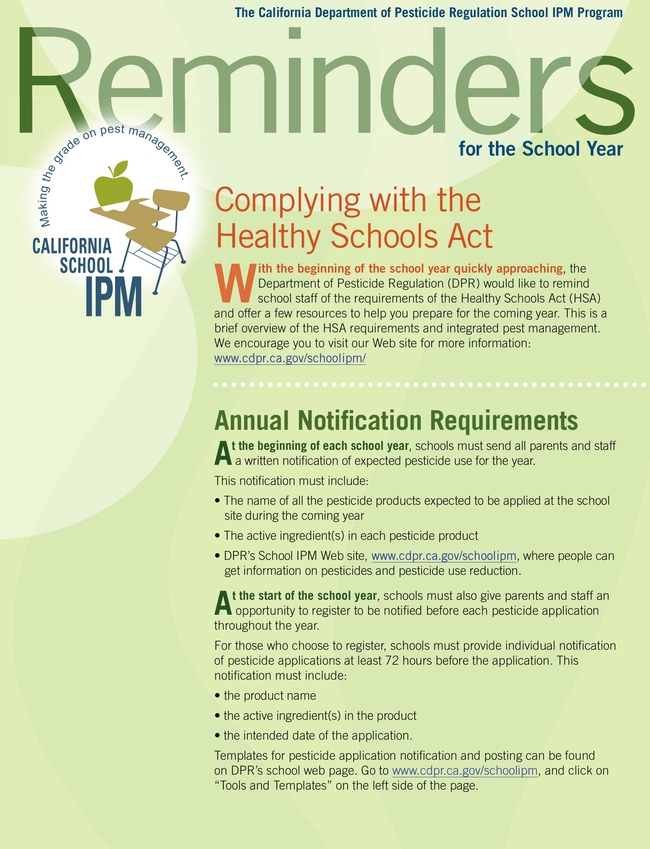
Classrooms, playgrounds, and athletic fields that were quiet during the summer months will once again be filled with the sounds of learning and playing. Landscape and pest management professionals have been taking advantage of the slow summer months preparing the grounds and facilities for the upcoming year. While at one time this may have meant heavy applications of pesticide to rid the facilities of pest problems, today schools are healthier environments for our kids.
Schools are required to follow the Healthy Schools Act (HSA), a law passed in 2001 in response to increasing concern of pesticide exposure and resulting heath issues. The HSA gives parents and staff the “right to know” about what pesticides are being applied and requires schools to keep records of applications and report information to the state. The HSA also encourages the use of integrated pest management (IPM) and the adoption of least toxic pest management practices as the primary way of managing pests in schools. Each school or district appoints an IPM coordinator to carry out the requirements of the Healthy Schools Act.

Each school is also required to maintain records for at least four years of all pesticides used and to report pesticide use to both the county agricultural commissioner and the Department of Pesticide Regulation. There are certain products that are exempt from the notification and posting requirements of the HSA. These include reduced-risk pesticides, such as self-contained baits or traps or gels or pastes used for crack-and-crevice treatments. Antimicrobials and pesticides exempt from registration are exempt from all aspects of the Healthy Schools Act, including reporting.
While not required, schools are strongly encouraged under the HSA to adopt an integrated approach to managing pests. IPM focuses on long-term prevention of pests by monitoring and inspecting to find out what caused the pest and taking steps to eliminate those favorable conditions to reduce future problems. IPM uses a combination of methods to solve pest problems using least toxic pesticides only after other methods have allowed pests to exceed a tolerable level.
With IPM, schools get long-term solutions to pest problems. There is less pesticide used reducing the risk of pesticide exposure. Finally, less notification, posting, and recordkeeping is required from schools.
The California Department of Pesticide Regulation School IPM Program has a new handout reminding schools of the requirements of the HSA. For more information on the School IPM program and the Healthy Schools Act, visit the DPR website, and for more on IPM, visit the UC Statewide IPM website.